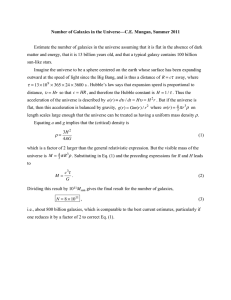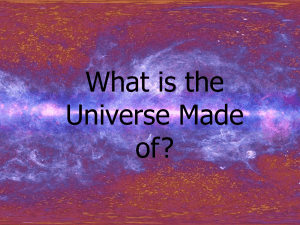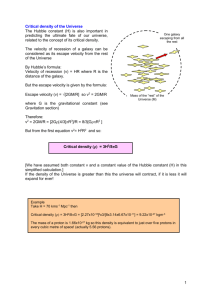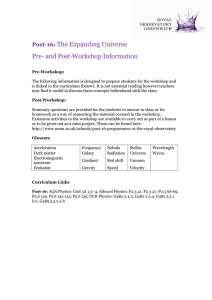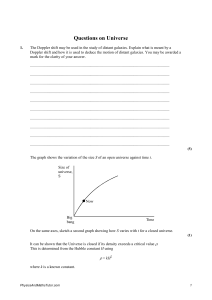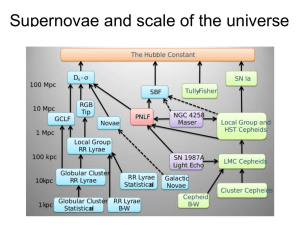Hubble's Law and the Age of the Universe
advertisement
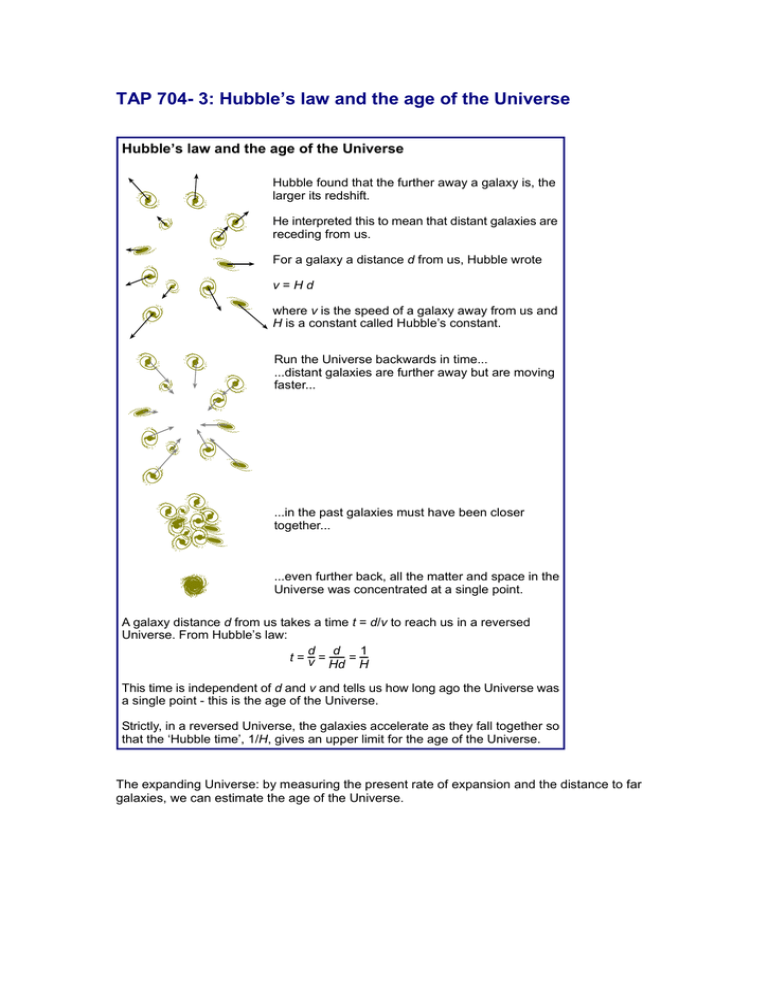
TAP 704- 3: Hubble’s law and the age of the Universe Hubble’s law and the age of the Universe Hubble found that the further away a galaxy is, the larger its redshift. He interpreted this to mean that distant galaxies are receding from us. For a galaxy a distance d from us, Hubble wrote v=Hd where v is the speed of a galaxy away from us and H is a constant called Hubble’s constant. Run the Universe backwards in time... ...distant galaxies are further away but are moving faster... ...in the past galaxies must have been closer together... ...even further back, all the matter and space in the Universe was concentrated at a single point. A galaxy distance d from us takes a time t = d/v to reach us in a reversed Universe. From Hubble’s law: 1 d d = t=v= Hd H This time is independent of d and v and tells us how long ago the Universe was a single point - this is the age of the Universe. Strictly, in a reversed Universe, the galaxies accelerate as they fall together so that the ‘Hubble time’, 1/H, gives an upper limit for the age of the Universe. The expanding Universe: by measuring the present rate of expansion and the distance to far galaxies, we can estimate the age of the Universe. Practical advice This diagram is reproduced here so that you can discuss it with your class. It could be used as an OHT External reference This activity is taken from Advancing Physics, chapter 12, 160O
